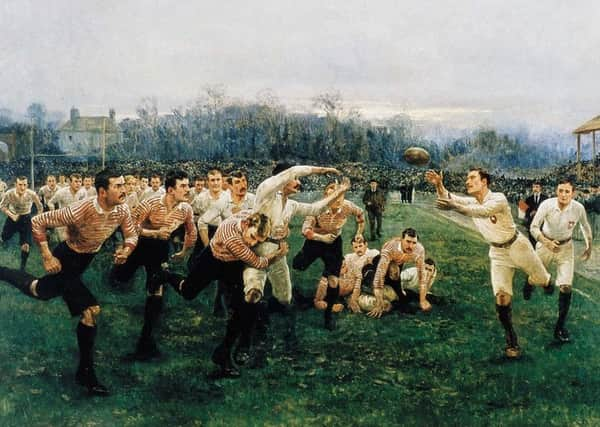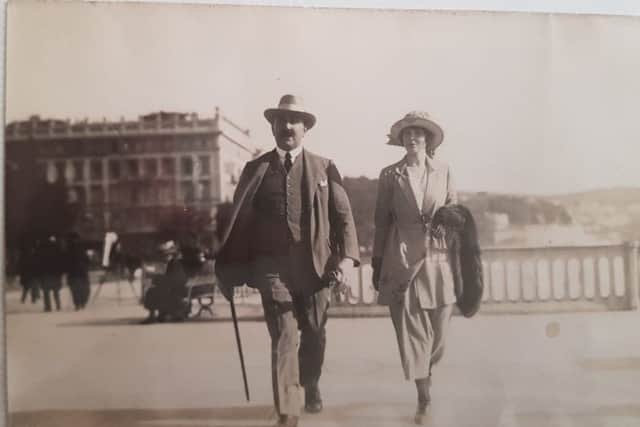Rugby match painting has a mysterious back story


Since the painting was unveiled it has been surrounded by speculation, mythology, forensic scrutiny, conspiracy theories galore, the main thrust being centred around the individuals involved, with suggestions being made that some of the players in the original have been removed, ghostly images discovered when the painting was restored, officials added and even players being named who did not take part.
Here is a mystery that would test the combined little grey cells of Sherlock, Morse, Barnaby, Poirot, Maigret and certainly Clouseau; put into modern parlance the painting comes with plenty of baggage.


Advertisement
Hide AdAdvertisement
Hide AdAmidst all the wrangling over the composition of the painting one fact is not disputed and that is the name of the individual in a white shirt making an outrageous pass while being tackled, one Alf Barraclough.
Alf’s brother, Irving Barraclough, was a Captain at Morecambe Golf Club in 1939.
Alf played rugby for Manningham FC in Bradford and went onto gain caps for Yorkshire at both union and league because Manningham FC was one of the clubs that joined the Northern Union from the beginning. However, they only lasted till 1903, folding because of the financial difficulties that many clubs were experiencing in the early years of the 20th century; a similar Sword of Damocles descended on two of our local clubs, resulting in the demise of both Lancaster in 1905, and Morecambe the following year.
Coincidentally Manningham FC later transferred their allegiances to the round ball game to become Bradford City.
Advertisement
Hide AdAdvertisement
Hide AdThe painting and Alf Barraclough, a larger than life character “up North,” who when he hung up his boots became an avid follower of the sport of kings, came full circle when David Harwood, who was attending a recent Vale of Lune home game, casually mentioned his connection with the painting; Alf was his great uncle on his father’s side.
For many years prior to “The Great Schism,” as it came to be known following the formation of the Northern Union in August 1895, those players who worked a six day week could not afford to take time off without recompense.
It was a particular problem in the North of England, negotiations with the RFU about “broken time payments” proved unproductive and inconclusive, and eventually the acrimony was ended in the “George Hotel” in Huddersfield in August 1895 as both codes went their separate ways: one continuing down the path of amateurism, the other opting to pay players, and of course rugby was never the same.
All this was occurring before, during and after Wollen’s painting hence the various hypotheses that have surfaced over the years.
Advertisement
Hide AdAdvertisement
Hide AdThe painting itself has had a chequered history following its completion.
For a while it hung in the Royal Academy before being displayed in Leeds and Bradford and then “disappearing.”
In 1957 it was discovered in a second hand shop in Newcastle on Tyne where it was purchased by Yorkshire Rugby Union for £25. For several years it hung in Otley’s clubhouse before being loaned the RFU by the Yorkshire RFU in the late sixties.
“Every picture tells a story,” while another proverb states “That one picture is worth a thousand words,” certainly this particular work of art has captured the imagination and as other aspects of its provenance come to light, it will do so for years to come, perhaps not quite in the same league as Leonardo da Vinci’s “Mona Lisa” or “The Last Supper, but thought provoking all the same. Wollen’s painting has appeal but it also has a back story of intrigue and mystery and will continue to be a catalyst for debate by not only art historians, but the followers of 15 and 13-aside rugby in years to come.